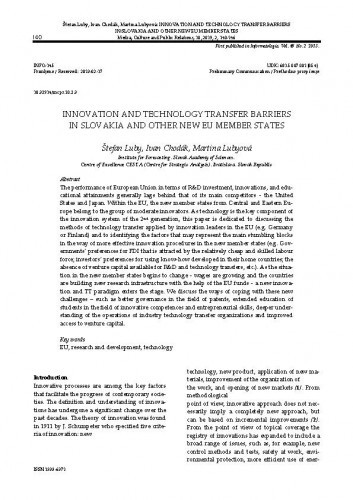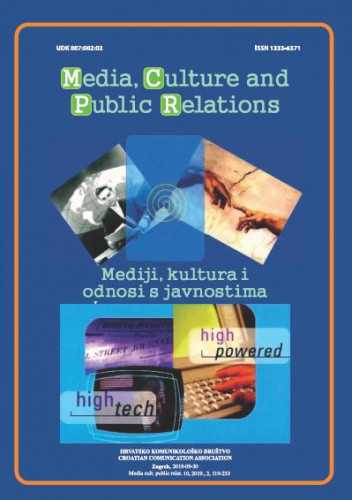The performance of European Union in terms of R&D investment, innovations, and educational attainments generally lags behind that of its main competitors - the United States and Japan. Within the EU, the new member states from Central and Eastern Europe belong to the group of moderate innovators. As technology is the key component of the innovation system of the 2nd generation, this paper is dedicated to discussing the methods of technology transfer applied by innovation leaders in the EU (e.g. Germany or Finland) and to identifying the factors that may represent the main stumbling blocks in the way of more effective innovation procedures in the new member states (e.g. Governments´ preferences for FDI that is attracted by the relatively cheap and skilled labour force; investors´ preferences for using know-how developed in their home countries; the absence of venture capital available for R&D and technology transfers, etc.). As the situation in the new member states begins to change - wages are growing and the countries are building new research infrastructure with the help of the EU funds - a new innovation and TT paradigm enters the stage. We discuss the ways of coping with these new challenges – such as better governance in the field of patents, extended education of students in the field of innovative competences and entrepreneurial skills, deeper understanding of the operations of industry technology transfer organizations and improved access to venture capital.; Učinkovitost Europske unije u smislu istraživanja i razvoja, inovacija i pohađanja obrazovnih institucija uglavnom zaostaje za glavnim konkurentima - Sjedinjenim Američkim Državama i Japanom. Unutar EU-a, nove države članice iz srednje i istočne Europe pripadaju u skupinu umjerenih inovatora. Kako je tehnologija ključna komponenta u inovacijskom sustavu 2. generacije, ovaj članak je posvećen raspravi o metodama transfera tehnologije koje primjenjuju inovacijski lideri u EU (npr. Njemačka i Finska) i identificiranje čimbenika koji mogu predstavljati glavni kamen spoticanja u načinu učinkovitijih inovacijskih postupaka u novim članicama EU (npr. sklonosti vlada za izravnim stranim ulaganjima koja privlači relativno jeftinu i kvalificiranu radnu snagu; sklonosti investitora za korištenjem know-how razvijen u svojim matičnim zemljama, izostanak rizičnog kapitala na raspolaganju za istraživanje i razvoj i transfer tehnologija, itd.). Kao što se situacija u novim državama članicama počinje mijenjati - plaće rastu i zemalje grade novu istraživačku infrastrukturu uz pomoć EU fondova – nove inovacije i TT paradigme ulaze na pozornicu. Raspravlja se o načinima suočavanja s novim izazovima - kao što su bolje upravljanje u području patenata, prošireno obrazovanje učenika u području inovativnih kompetencija i poduzetničkih vještina, dublje razumijevanje o poslovanju industrije za transfer tehnologije i poboljšanje pristupa kapitalu.
Sažetak

 Media, culture and public relations : Mediji, kultura i odnosi s javnostima : 10,2(2019) / glavni i odgovorni urednik, editor-in-chief Mario Plenković.
Media, culture and public relations : Mediji, kultura i odnosi s javnostima : 10,2(2019) / glavni i odgovorni urednik, editor-in-chief Mario Plenković.